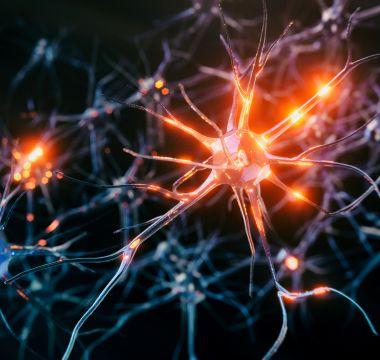New Cell Types Identified in Parkinson’s

New research reveals the complex changes happening in different cell types in the brain that are affected by Parkinson's and identifies a unique population of neurons.
A hallmark of Parkinson's disease (PD) is the death of brain cells called dopaminergic neurons in a part of the brain called the substantia nigra. For people with Parkinson’s, these neurons stop producing dopamine, which helps control the body's movements and moods. However, it’s not clear if other types of cells are also affected.
A new study published in Science Advances identifies a new type of neuron associated with Parkinson’s. By looking at which genes were turned on and off in hundreds of thousands of different cells in the substantia nigra, the researchers developed an “atlas of gene expression.” This research may help us better understand Parkinson’s, and possibly help guide the development of new treatments.
This study was led by the Parkinson’s Foundation 2022 Research Centers Principal Investigator Zhenyu Yue, PhD, and co-Investigators Joel Blanchard, PhD, John Crary, MD, PhD and Bin Zhang, PhD, from Icahn School of Medicine at Mount Sinai.
About the Study & Results

The researchers studied gene expression in 315,867 cells from the substantia nigra of people who did or did not have Parkinson's. Within the samples, the researchers identified various known cell types, including different types of neurons and other brain cells.
Interestingly, the scientists found a unique group of neurons that had an activated gene called RIT2, which past studies had shown is associated with Parkinson's risk. These cells lacked markers of other common cell types in the substantia nigra, indicating that they may be a newly recognized cell population.
However, in people who had advanced Parkinson’s, RIT2 expression was decreased compared to those without Parkinson’s, suggesting that reduced RIT2 expression may play a role in the development of Parkinson's. This may also indicate that the unique population of RIT2 neurons may be more vulnerable to the disease.
The team assembled their data on gene expression to create an atlas of different populations of single cells in the substantia nigra, which can be used to explain changes associated with Parkinson’s. They found distinct patterns of changes in gene expression in the cells marked by RIT2. Moreover, the team identified pathways of cell-to-cell communication that were altered in Parkinson’s.
Research Takeaways
The researchers are hopeful that this new data will be useful in future research. For example, while many dopaminergic neurons were lost due to advanced Parkinson’s by the time these samples were collected, many survived — their atlas may eventually help reveal what makes some neurons more resilient.
They also hope that this data will help:
- Understand pathogenic mechanisms (how Parkinson’s works)
- Identify new therapeutic targets
- Help find clinical biomarkers for Parkinson’s. A PD biomarker would lead to faster and more accurate diagnosis and the ability to track PD progression. Right now, there is no single biomarker for Parkinson’s.
Highlights
- A unique group of neurons in the substantia nigra is marked by an activated gene, called RIT2, which past studies have shown is associated with Parkinson's risk. These cells did not have markers of other known cell types, indicating that they had not been previously identified.
- In people who had advanced Parkinson’s, RIT2 gene expression was reduced, which suggests it may play a role in the development of Parkinson's. It may also mean that the unique population of RIT2 neurons may be more vulnerable to the disease.
- Data was converted into an “atlas of gene expression” that identifies a broad range of gene expression patterns within the cells of the substantia nigra.
What does this mean?
This research is a step towards better understanding the changes that occur in the substantia nigra during Parkinson’s. Knowing that there is a new population of brain neurons tied to Parkinson’s — in addition to the well-established dopaminergic neurons — will provide researchers with new targets to develop different PD medications. These neurons can also lead to the development of a new biomarker, which could be a breakthrough in PD diagnosis and progression tracking.
What do these findings mean to the people with PD right now?
While this study does not impact people with PD right now, the PD community can find hope in that researchers are still discovering more about this disease, and how it works. We can only solve a puzzle if we have all the pieces, and this new piece contributes to the overall battle to beat Parkinson’s.
People who are concerned that they may be experiencing Parkinson’s symptoms should talk to a healthcare provider.
Learn More
The Parkinson’s Foundation believes in empowering the Parkinson’s community through education. Learn more about PD and the topics in this article through our below resources, or by calling our free Helpline at 1-800-4PD-INFO (1-800-473-4636) for answers to your Parkinson’s questions.
Related Materials
Related Blog Posts


Defining Parkinson’s Disease for the Next Generation of Therapies
